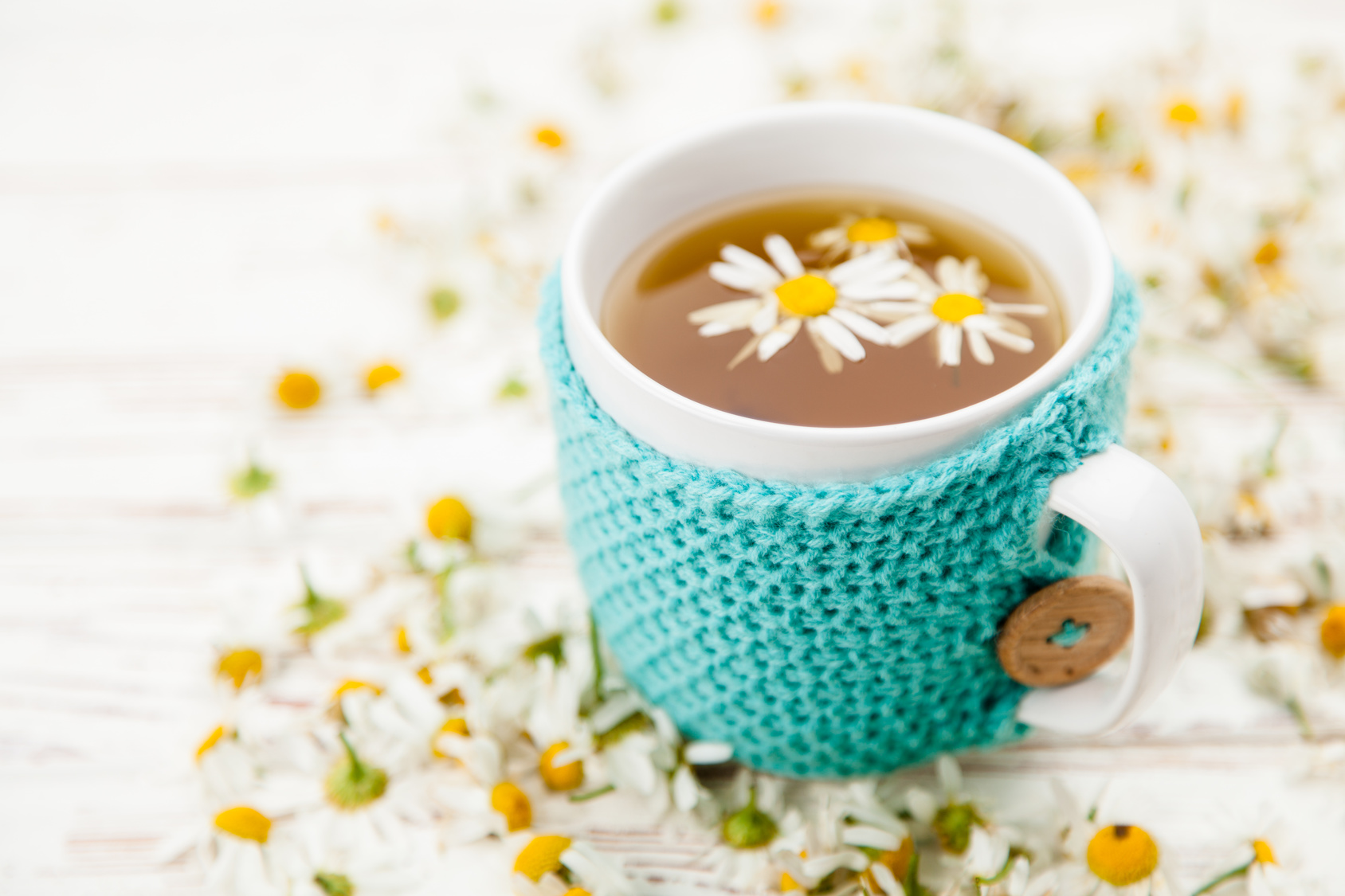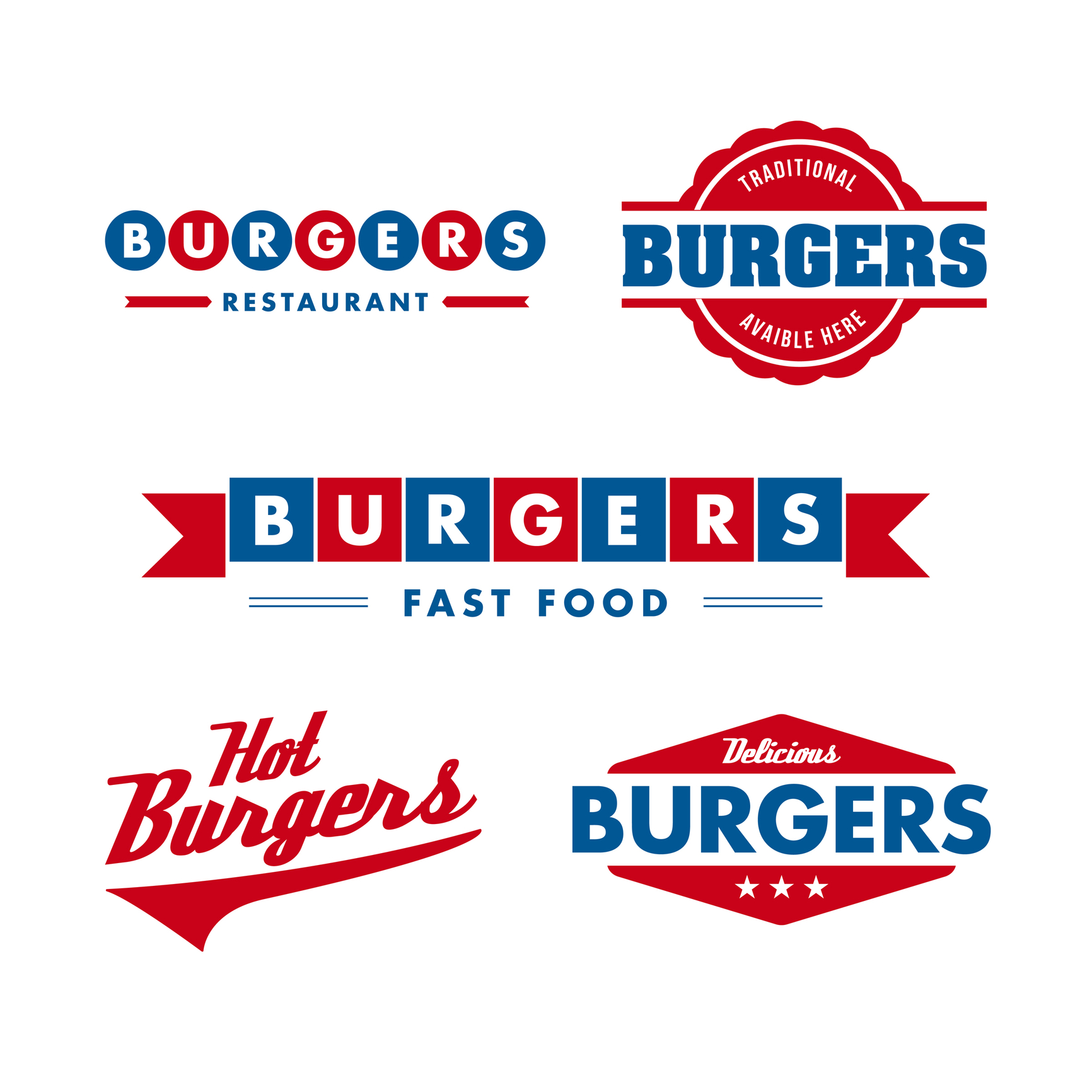How to Choose the Best Colors for Your Food Logo Design
Posted on May 30, 2018 by Logo Design Tips and Tricks

Logo design is vital for every business. Your logo is the first piece of imagery your customers look at and is their tool for identifying your brand.
Most businesses stress over several logo aspects: the font, the design, etc. But few businesses stress over a major detail: color.
Color can make a person feel different ways.
If you want your customers to convey a certain feeling, research color psychology. This is key when creating a logo for a food company; you want your customers feeling hungry, happy, and satisfied.
If you’re creating a food logo design, here’s a look at each color and what it entails. Here’s your guide to choosing the best color for your logo.
Red
Red is one of the most diverse colors in color psychology. Red conveys passion but it also conveys dominance and strength. When someone looks at the color red, they feel very strong emotions. But these emotions can lead to hunger.
Admit it: you love food. For lots of people, food is their passion. Hunger is a dominating emotion, which represents red’s dominating influence.
Red is a popular logo design choice because the color attracts attention. When you see a glimpse of red hue, you become interested in the logo.
Red also has powerful physical effects. This includes increased metabolism and blood pressure. For food logo design, looking at red imagery can boost your appetite!
Orange
Lots of food and beverage companies use orange in their logo. That’s because orange reminds you of hunger and thirst. When you see the color orange, you think of a refreshing tangerine or a delicious sweet potato.
Orange is also a vivid color. Like red, you naturally gravitate toward the color orange.
But rather than convey dominance and passion, orange conveys warmth and comfort.
Compare orange to a homecooked meal and red is scarfing down a burger. This is why lots of restaurants use orange in their logo.
Cooks are especially prone to the color orange. Orange ignites creativity — and who better to indulge in the creativity of food than a cook? If you create kitchen utensils, orange is a great color to use in your logo.
But there are issues when using orange as a logo. Different print media display orange differently; this includes on the web, on paper, and on television. If you want to use orange in your logo, discuss your options with a graphic designer.
Yellow
There are two colors that food brands commonly use for their logos: red and yellow. Red was mentioned, but now it’s yellow’s time to shine. Yellow is an intense color, therefore it attracts intense emotions.
Yellow is beneficial because it’s attention-grabbing and conveys feelings of happiness. Yellow also represents food attributes: the sun helps food grow and delicious foods such as corn and lemons are yellow.
Like orange, yellow can be rough on logos. If you decide to use yellow in your food logo design, combine yellow with another color. Yellow is hard on the eyes and is difficult to read.
When mixed with a dark color such as black, yellow help brighten up the design.
Green
If you have an eco-friendly, vegan or humane food brand, green is the color you should choose. In this modern day, green is all about the earth. When someone looks at the color green, they feel a sense of joy and satisfaction.
But make sure you discuss your green logo with a graphic designer. Green is a powerful color; therefore, certain shades can seem unappetizing.
Blue
Blue is the epitome of a cool tone. This color activates relaxation and serenity. Not exactly a color you want to use in your food logo design.
But some logos look great with blue. For example, blue does great with seafood. Fish come from the ocean, which is blue. Therefore, blue is fitting. But if you run a farm, a blue logo won’t match as well.
Purple and Violet
Purple is one of the most difficult colors to use with food logo design. This color is another cool tone, which is always difficult in food industries. Purple also conveys imagination and spirituality, which aren’t very appetizing emotions.
Like green, purple is great for food brands with humane value. Purple activates your psychic senses and your morality. It helps you become a humanitarian and ignites compassion.
While a fully purple logo won’t convey much strength, adding purple hues will make your logo more powerful.
Black and White
If logo designers are unsure of which colors to choose, they go with black. Do you wonder why the little black dress is a wardrobe staple? Black looks good on everyone and is perfect for any occasion.
This idea applies to logo design. Black is legible, always makes the perfect font color, and can be used as an outline for an image.
But there are times when your logo is placed on a dark image. Therefore, have the same logo available in white.
While both colors aren’t “food-friendly,” you can easily draw an outline of a food-inspired image.
Brown
Browns are often used for eco-friendly food brands and farms. Brown signifies the earth; it’s wholesome and natural. When someone looks at the color brown, they think of the soil that grows their food.
But brown can also be unappetizing. If you use brown, combine other colors such as green and yellow for an earthy feel.
But foodies also associate chocolate with another food source: chocolate. If you make chocolate, dark brown or brown-black is always appropriate for chocolatiers.
Pink
Pink doesn’t invoke feelings such as hunger but can work in food logo design.
Pink represents femininity, love, and understanding. But pink also reminds us of some tasty treats: cotton candy, bubblegum, and even strawberry flavors all have a pink color.
If you’re in the sweets business, a pink logo will activate a sweet tooth.
Time to Use These Yummy Colors for Food Logo Design
When you promote your food brand, you want your customers feeling their taste buds go wild.
Pictures and videos of food do the trick, but you can activate this sense with your company’s logo. The secret to this effect is choosing the right color.
If you can’t decide which color to use, a designer can point you in the right direction. Or, you can make your logo online. Get started here.
4 Tips on Designing a Tea Logo
Posted on September 05, 2017 by Logo Design Tips and Tricks

You don’t create the perfect brew on the first try.
Likewise, when you’re creating a tea logo for your business, there are a few things you need to keep in mind if you want your branding to be as strong as your tea.
Though much of logo design will be informed by the specifics of your brand, there are a few general rules and tips you need to keep in mind before you start creating.
Read on to find out what they are.
1. Keep It Evergreen
No, “Evergreen” isn’t an exciting new tea flavor you haven’t heard about yet.
Instead, evergreen refers to content and design that will be just as relevant in ten years as it is today.
Especially since tradition and a “classic” look are such an integral part of the tea industry, it’s best to create a design that avoids trends.
Plus, going with an overly-trendy look just means you’ll have to rebrand in the future. Doing this isn’t just expensive — it can also seriously confuse your customers.
2. Keep It Elegant
It’s called “High Tea” for a reason.
When you’re designing your tea logo, it’s always better to focus on concrete branding, as opposed to crowding your logo design with too many elements.
For example, the logo tea giant Chateau Rouge uses for its Rooibos Tea UK and other offerings is all about simplicity. The brand’s initials, “C.R.” are written in a looped white script, which stands out perfectly against a black background.
This suggests to consumers that your brand’s name speaks for itself and that you’ve already established yourself as a staple of the tea industry.
3. Keep It Legible
One of the biggest mistakes we see in logo design?
Fonts and images that become impossible to read and blurred when resized.
When you’re creating your logo, keep in mind that it’s not only going to go on the front of packages. It will also be displayed on your website, your social media accounts, in print ads, and even on your business cards.
Nothing says “unprofessional” like an overly-pixelated image and a font that even the thickest of glasses won’t help you to read.
Always limit the amount of texts and images in your design. This doesn’t just give you a crisp, clean look — it also ensures that you won’t lose any of the design during the resizing process.
4. Keep It Creative
Tea leaves may be a great way to have your fortune told, but they’re a completely overused tea logo design element.
Other things we’re sick of seeing?
Cups/mugs of tea, tea bags, and tea pots. If you want to set yourself apart from the competition, you’re going to need to think outside of the tea box.
Ask yourself why you started your tea company in the first place. What niche do you fill? Designing a logo around your origin story ensures that people will always ask questions about your logo.
Start Designing Your Tea Logo Today
Thanks to this post, you now have several options when it comes to creating effective, unique tea logos.
To start creating, use our free online logo maker tool.
When you’ve settled on a design you like, be sure to keep checking back with our blog to learn more about how a strong logo serves as the foundation of all your future branding.
5 Breweries to Inspire Your Craft Beer Logo and Brand
Posted on July 18, 2017 by Logo Design Tips and Tricks

It started out as a hobby.
Now it’s a multi-billion dollar operation. In fact, in 2016 the craft beer industry sold $23.5 billion in beer. This accounts for 22% of total beer sales in America.
The number of independent breweries tops the 5,300 mark. For craft brew makers the growth is exciting and promising. But that overflowing growth brews up one thing: competition.
The nation’s taste-buds are shifting. In a market constantly flooded with new brands, what can a new brewer do to get noticed?
The second thing to do is begin brainstorming your new craft beer logo. The first: understand your customer.
The Mind of the Beer Enthusiast
To stand out and rise a head above the competition, craft breweries are focusing on their branding. Yes, the beers must still speak for themselves, but beer enthusiasts want to be courted.
The surge in craft beer popularity reveals a lot about today’s beer drinker. They are turning away from Big Beer name brands to try newer, experimental flavors with an edge.
They seek out tastes from a limited small-batch offering pulled from a portable CO2 keg tap at a beer garden. Forget grabbing some cans from the corner liquor store.
In fact, recent trends show that millennials (the biggest lovers of craft beer) buy four or more different brands per month.
Are you looking to tap into the craft beer craze? Maybe you’re thinking of rebranding? After you brew your exceptional creation, you need to market it.
Check out what some breweries are doing to grab beer drinker’s attention (and keep it). Use their stories to inspire your own craft beer logo ideas.
We’ve chosen 5 different styles of branding used by successful breweries. Which style best fits your brew?
SIMPLE: New Belgium Brewing Company
We’ll start here because it’s a simple choice.
What comes to mind when someone says Fat Tire?
If you don’t immediately picture an old-style bike, then you most likely don’t drink beer. And you are reading the wrong blog post. (But keep reading. There’s a lot of great info!)
One of the cool things about this industry is the flexibility it allows. Unlike large beer companies, independent breweries aren’t stuck to a single label design. But beware: too much creativity may not be a good thing.
The rapid growth experienced by New Belgium Brewing Co. is a classic lesson in that old principle KISS (keep it simple stupid).
As the brewery grew, developing new beers and product series, the temptation to get more contemporary also grew. The artwork changed with every new release. Then, in 2013, New Belgium realized they had created a disconnect, not a recognizable flow.
The fix: take it back to the basics.
Spokesperson Bryan Simpson summed it up for Beer and Brewing magazine. “We took a long look at our portfolio and decided we wanted more consistency across the cold box. We needed to look like one family of brands. . .”
It took almost a year to complete. Did going back to simple work? According to Simpson 2014 was an excellent year with 19% growth.
That deserves a KISS of approval.
NATURE/OUTDOORS: Uinta Brewing Company
It’s not uncommon to find a craft beer logo and branding style that find inspiration from nature.
But, at Uinta Brewing nature is not only their brand, it’s the brewery culture. Their two passions: brewing great beer and protecting a great planet.
Since 2001 the brewery has run on 100% renewable energy (wind, and more recently, solar). And they even offer bins in the brewery parking lot for recycling brown glass.
Named after the tallest range in Utah, the Uinta Mountains, it’s no accident the brewery’s beer reflects an outdoorsy vibe. Their Golden Ale Par Series celebrates and raises awareness for our national parks.
From the website: GREAT beer is brewed with environmental stewardship, support for community and a whole lot of passion.
Wondering if this love for nature helps with brand awareness? Check out their Instagram to see photo after photo of Uinta beer. Staged with nature as a backdrop.
Their tagline: Earth, wind and beer.
It’s only natural they’re so popular.
HISTORICAL: 21st Amendment Brew
One thing is certain, craft beer drinkers are changing. As palates become more sophisticated so do the desires to know the “back stories” of the beers they drink.
For 21st Amendment Brewing, history is the cornerstone of their operation. While researching a name the founders immersed themselves in San Fransisco’s rich brew history.
They discovered there were 40 craft brew operations within SF city limits in the early 1900s. Then came Prohibition. It wiped out an entire culture. Then came the 21st Amendment. And a culture has been revitalizing ever since.
That story is the inspiration for the artwork that goes on the cans (yes! great artwork can exist on cans) of 21st Amendment Brewery.
MUSICAL: Dogfish Head Craft Brewery
Beer and Rock ‘n’ Roll. Beer and jazz. Music and Beer. They just go together.
Maybe it’s because the sound of beer bubbling into a pilsner is like music to the ear.
With a name like Dogfish Head, you’d expect something out-of-the-box. The brewery’s commitment to music has not only inspired their craft beer logo and labels, it has inspired their beer.
They created an entire series of beers as a tribute to their love of music. Artists and bands include Miles Davis, Deltron 3030, Robert Johnson, and their American Beauty Imperial IPA, not only inspired by the music but also the members of the Grateful Dead.
And in 2011 the brewery really got its groove on when they released Faithfull — no that’s not a typo — which is a reference to the 1998 Pearl Jam song.
Full music immersion doesn’t stop at the suds. Dogfish Head actually hosts their very own music festival every fall, Analog-A-Go-Go. The two-day beer and music festival features food, an artisanal marketplace, a vinyl exchange, and plenty of Dogfish Head brew.
It seems they have certainly found their muse.
A Craft Beer Logo that Tells a Story: Grimm Brothers Brewhouse
Who doesn’t know the yarn-weaver bellied up to the bar every Friday night after quittin’ time? His stories are fanciful, adventurous and — although not believable — memorable.
So it is with beer. Minus the unbelievable part, of course.
What better way to tell stories than through the use of fairy tales? The scary ones, not the happily-ever-after type.
Enter Grimm Brothers.
But the brewery isn’t based on the name alone. The stories influence everything.
From the philosophy of brewing (old-style German) to the artwork on every can, the brewers (who aren’t brothers) have taken the art of storytelling to the next level. Their craft beer logo and label designs even mimic the fonts used in the original storybooks.
The website tells their story perfectly:
“Inspired by the stories collected By Jacob and Wilhelm Grimm, they have crafted their beers to tell not only the story of Craft Brewing, but the harrowing and dark tales handed down through the generations.”
Become a Part of a Culture
Jon Taffer of Bar Rescue infamy hits the nail on the head of foam when he said in a recent interview: “Craft beer has created a culture, not a trend. A trend grabs market share and then disappears and gives it back. A culture grabs market share and then keeps it. The craft-beer culture isn’t going anywhere in America.”
Are you ready to become a part of the culture?
Your craft beer logo is the physical, emotional, or philosophical expression of your brand. Not to mention the style of craft beer you brew.
Learn how you can create your own free craft beer logo today.
The Top Mistakes To Avoid For Your Restaurant Logo Design
Posted on July 13, 2017 by Logo Design Tips and Tricks

Great restaurant logo design can really help your business stand out from competitors on the high street.
A good logo will convey to customers exactly what your restaurant is about – if it’s fancy, family-friendly, or fast and tasty.
A bad logo can make the place look tacky and put off customers. Here are the top mistakes to avoid when looking for a new restaurant logo design.
Keep it as Simple as Possible
Think of some restaurant logos – McDonald’s, KFC, Wendy’s. What do they have in common?
That’s right – they’re all very simple. There’s a limited color palette in use and there isn’t very much going on in any of these three.
But we bet you were able to remember them all. And you’re not alone.
A survey from Siegel + Gale found that simple logos were the most memorable. 16% of the 3,000 people asked said Nike was the most memorable, followed by 15.6% saying Apple.
It doesn’t matter if your restaurant is serving fast food or gourmet meals – keeping your logo simple will aid your customers’ memories and help to build brand recognition.
This can be an incredibly powerful marketing tool if you go on to open other restaurants under the same brand.
Choose a Legible Font
Make sure people can actually read the name on your logo. That means choosing a clear font which is easy to read, and setting it at an appropriate size.
There are hundreds of fonts out there, but whatever you choose it should reflect your business. You don’t want a very ‘cartoony’, informal font for a high-end restaurant, or vice versa. It sends the wrong message.
Do some testing before you commit to having your design made up. Ask your friends and family to see if they can read the text, and what they think the font represents. If their answer doesn’t match what you’re looking for, consider making a change.
Don’t Copy Anyone Else
The whole point of having a logo is to differentiate and identify yourself in a busy market. If you copy someone else (inside or outside your industry), it will confuse customers and definitely generate ill-will from the business you’ve copied.
In the worst-case scenario, you could even find yourself on the wrong side of a lawsuit. The owner of the ‘Krusty Krab’ restaurant was pursued by Viacom for use of its trademark last year (the name comes from the popular kids’ show Spongebob Squarepants).
Be original. Stand out.
Cheaper isn’t Always Better…
We know local businesses have limited budgets. But hiring a super cheap designer is not always a great idea.
We’ll admit, there are outliers – some designers might do special rates for smaller companies, for example.
However, chances are that paying someone to create a logo for next to nothing is simply money down the drain.
…but Free Just Might Be
If you’re willing to stick to the key points we’ve set out here, and have a limited budget, you might want to have a go at making your own logo.
We recommend you get feedback on it and refine it sensibly. But if you want to save money and feel like your creative juices are flowing, we say go for it!








